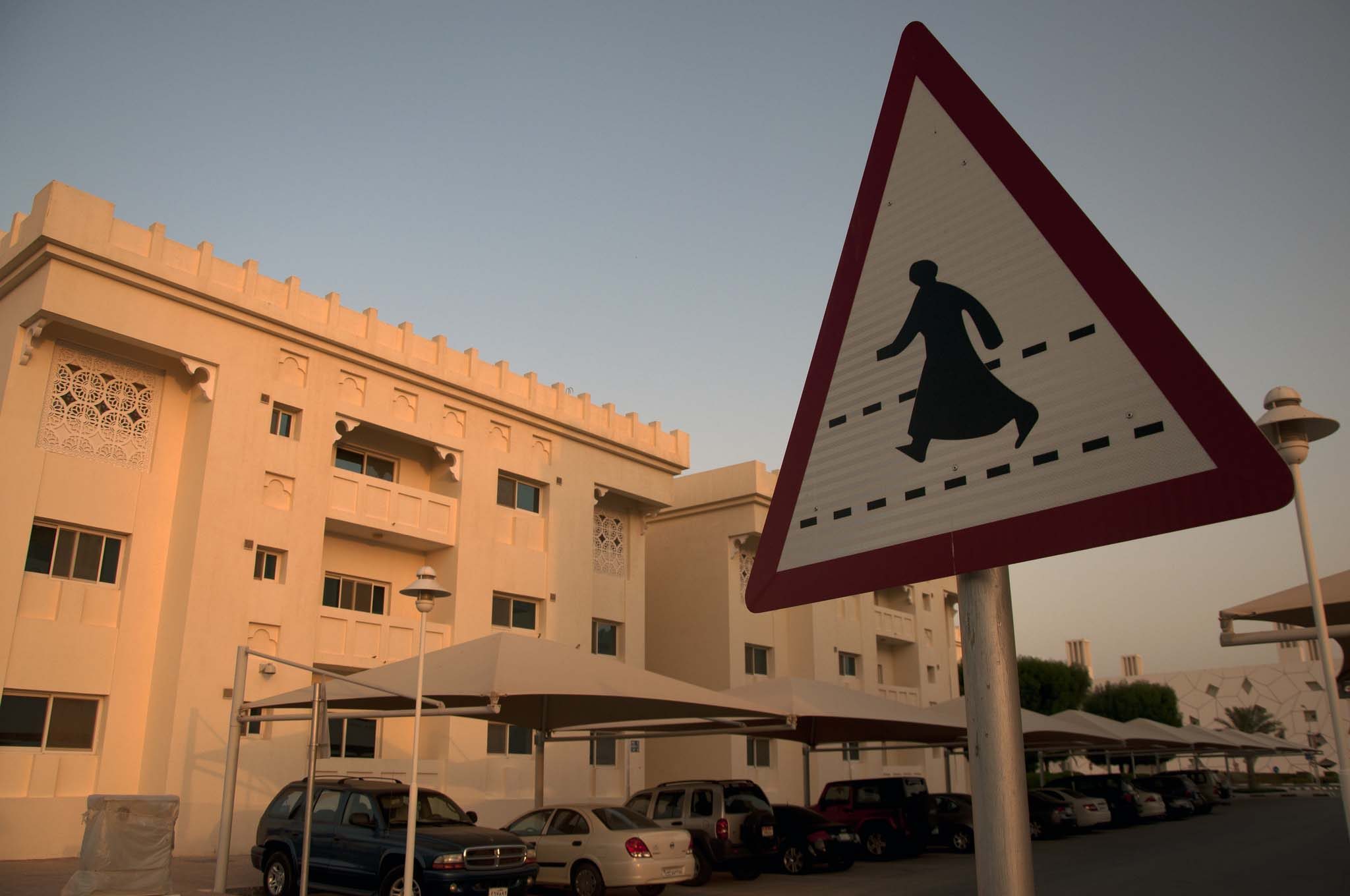
As the number of pedestrians killed in Qatar continues to rise, the Ministry of Transport has asked residents for feedback on how to make walking in the country safer and more desirable.
Over the weekend, consultants hired by the ministry launched a series of public consultations – a rarity in Qatar – around town.
They have been tasked with preparing plans to construct pedestrian routes free from obstacles between major destinations, as well as identifying the 50 areas where proper crossings are most needed.
Experts have so far received feedback from approximately 300 residents and said they are hearing one common theme:
“The overall view of residents is that pedestrians aren’t given a high enough priority,” John Payne, a principal traffic engineer at consulting firm Mott MacDonald, told Doha News. “People are concerned that they can’t cross the road safely.”
In addition to the dangers involved with simply crossing the road, pedestrians in Qatar must contend with challenges such as sidewalks that suddenly come to an end or obstacles such as parked cars, pavement that’s in poor condition and construction equipment.

Residents have previously suggested that Qatar needs to make walking easier if the new Doha Metro project is to be a success.
Payne said it’s impractical for a growing country such as Qatar to be overly dependent on cars and added that encouraging more residents to walk would improve their health and the environment.
He added that the country’s extreme summer heat is no reason to neglect Qatar’s pedestrian infrastructure. People may walk shorter distances when it’s warm, but they’ll still travel by foot, Payne said.
‘Complete journeys’
Pedestrians make up approximately one-quarter of all road crash fatalities in Qatar, according to government figures released by the consultants. Some 68 pedestrians died last year in Qatar, up from 62 in 2013 and 58 in 2012.

An additional 168 pedestrians were seriously injured in 2014, roughly the same number as the previous year and up from 157 cases in 2012, the consultants said.
Payne said many of these incidents happen between intersections, when a pedestrian is forced onto the road because a paved sidewalk ends or they’re forced to jaywalk to reach their destination on the other side of the road.
This is why the ministry is developing a pedestrian crossing master plan for Qatar that emphasizes “complete journeys,” enabling residents to safely reach popular destinations on foot via a network of proper paths, Payne said.
“There is no point in having nice sidewalks that lead nowhere,” he said last night at MIA Park, where he and several colleagues were interviewing residents walking along the waterfront.
In addition to the master plan for the entire country, Mott MacDonald is preparing more detailed plans for a pilot project in a small area of Doha between Bank St. and the Corniche.
The goal is to test whether establishing a complete network of pedestrian paths, enhanced with directional markings and accessibility features such as curb cutouts, encourages more people to walk.
Finally, a third part of the project is to identify 50 of the highest priority areas for new pedestrian crossings, which will likely include a mix of bridges, signalized intersections and crosswalks.
A year ago, the Ministry of Interior said it planned to build 267 new pedestrian crossings, but gave no timeline for its initiative.
The final cost of the Ministry of Transport project is not known and will depend on the amount and type of construction undertaken, Payne said. For example, an air conditioned footbridge is more expensive to build than a crosswalk.

However, some residents say the biggest issue for pedestrians is the behavior of motorists, rather than a lack of infrastructure.
“You feel like cars are out to get you,” said Rahma Osman, a Qatar resident who discussed her experiences with the ministry’s consultants last night. “It’s dangerous. There are no pedestrian rights,” she told Doha News.
Osman suggested that educating children about road safety, such as through awareness programs in schools and public service announcement commercials on TV, would be a positive step.
Previous projects
Government officials appear to be including more pedestrian infrastructure in major construction projects around Doha. Ranging from simple sidewalks to elaborate pedestrian tunnels, many have had mixed results.
For example, the new wide sidewalks built last year on Qatari Bin Al Fujaah Street – known colloquially as “Garage Street” – in Bin Mahmoud are often blocked by parked vehicles and water pumping equipment.
Meanwhile, the crosswalk traffic lights that are supposed to stop vehicles and allow pedestrians to cross the Corniche near Sheraton Park have been disabled.

Several kilometers away, pedestrian tunnels were included in a new underground car park that connects the north side of Souq Waqif to the Corniche.
A few blocks over, a pedestrian tunnel cuts below the intersection of Al Rayyan Road and Al Asmakh Street, connecting the Al Shoukh Mosque, an underground car park and the souq.
The tunnel is clean, well-lit and monitored by CCTV cameras, but lacks signage that would make it easier to find and use.
However, Payne said it has all the components to be a success and predicts that more people will use it as the surrounding area, which includes the Msheireb Downtown Doha project, is redeveloped.
Payne said the Ministry of Transport is planning several more public consultations for later in the month. The times and locations are expected to be advertised in local media.
In the meantime, residents who are interested in sharing their thoughts can complete an online survey.
What can the government do to make it safer and easier to walk in Qatar? Thoughts?







